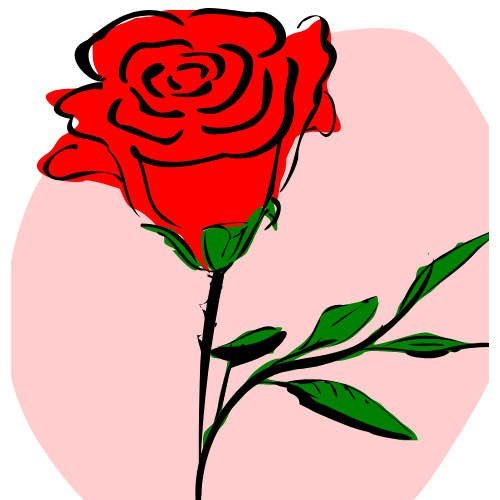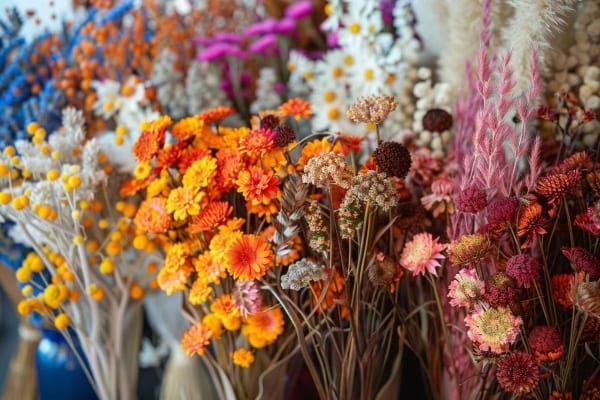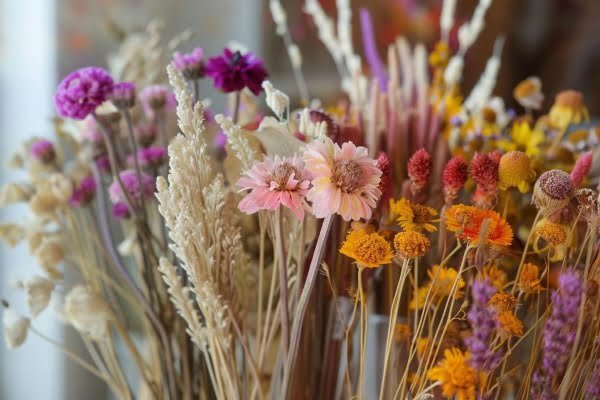Arranging bulk dried flowers can be a deeply satisfying and creative endeavor. Unlike fresh flowers, dried flowers offer durability, a long lifespan, and a unique charm that brings a sense of nostalgia and warmth to any space. Whether you're creating arrangements for personal enjoyment, weddings, events, or even for sale, working with bulk dried flowers can be both economical and artistically liberating. However, the process of arranging dried flowers requires a slightly different approach than fresh flowers due to their delicate nature and unique textures. In this guide, we’ll delve into the top tips for arranging bulk dried flowers to help you create stunning displays that showcase their enduring beauty.
1. Understanding the Characteristics of Dried Flowers
Before diving into arranging, it’s essential to understand the characteristics that make dried flowers unique:
- Durability: Dried flowers are long-lasting and do not wilt like fresh flowers, making them perfect for arrangements meant to last months or even years.
- Texture: Dried flowers often have a more varied and intricate texture compared to fresh blooms, adding depth and interest to arrangements.
- Color: While dried flowers come in various colors, they typically have a more muted and earthy tone. However, some can be dyed to achieve vibrant hues.
- Scent: Unlike fresh flowers, dried flowers may not have a strong fragrance, although some, like lavender and eucalyptus, retain their scent for a long time.
Understanding these characteristics will help you better plan your arrangements and select complementary flowers and foliage.
2. Choosing the Right Flowers
When arranging bulk dried flowers, the selection of the right types of flowers is crucial. Here are some popular options:
- Lavender: Known for its soothing fragrance, lavender is a staple in dried flower arrangements. Its purple hue adds a touch of color and elegance.
- Roses: Dried roses bring a timeless beauty to arrangements. Their muted colors and classic shape make them versatile.
- Baby’s Breath: This delicate flower adds a soft, airy feel to arrangements, often used as a filler to complement larger blooms.
- Strawflowers: These flowers retain their shape and color exceptionally well, making them ideal for adding bright spots of color.
- Pampas Grass: Pampas grass adds height and texture, perfect for creating statement pieces.
- Eucalyptus: Eucalyptus provides greenery with a subtle fragrance, often used to add structure to arrangements.
Selecting a variety of these flowers will give your arrangements a balanced mix of colors, textures, and forms.
3. Preparing Your Workspace
Before you begin arranging, it’s important to prepare your workspace to make the process smoother:
- Tools: Ensure you have the right tools, including sharp scissors or floral shears, floral wire, floral tape, and a hot glue gun if needed.
- Clean Surface: Work on a clean, flat surface with plenty of space to spread out your flowers and materials.
- Storage: Keep your bulk flowers in a dry, cool place before use to prevent them from becoming brittle or losing color.
- Organization: Lay out your flowers by type and size, so you can easily see what you have and make selections as you work.
A well-organized workspace will help you focus on the creative process without distractions.
4. Planning Your Arrangement
Before you start placing flowers, take some time to plan your arrangement:
- Style: Decide on the style of your arrangement. Will it be a rustic, wild bouquet or a more structured, modern design? The style will guide your choice of flowers and their placement.
- Color Scheme: Choose a color scheme that complements your space or the event for which the arrangement is intended. Consider using a monochromatic palette for a minimalist look or a mix of colors for a more vibrant feel.
- Shape and Size: Think about the shape and size of your arrangement. Will it be a tall, narrow bouquet for a vase, or a wide, low arrangement for a table centerpiece?
- Focal Point: Determine the focal point of your arrangement. This could be a large bloom, like a dried rose, or an eye-catching element like pampas grass.
Having a clear plan will make the arranging process more straightforward and help you achieve a cohesive and aesthetically pleasing result.
5. Creating the Arrangement
Now that you have your plan in place, it’s time to start arranging your bulk dried flowers. Here are some techniques and tips to guide you:
Building the Base
- Start with the Foliage: Begin by placing your greenery, such as eucalyptus or dried ferns, to create a base. This provides structure and fills in gaps.
- Use a Floral Foam or Grid: If you’re arranging in a vase, consider using floral foam or a grid made of floral tape at the opening to help keep stems in place.
Adding Flowers
- Layering: Start by adding your focal flowers first, placing them at different heights to create depth. Then, add in the secondary flowers, gradually building up the layers.
- Grouping: Group similar flowers together to create impact. For example, place several strawflowers together to create a bold, colorful section in your arrangement.
- Balancing: Distribute colors and textures evenly throughout the arrangement to avoid having one side look heavier than the other. Rotate your arrangement as you work to ensure it looks good from all angles.
Securing the Arrangement
- Floral Wire and Tape: Use floral wire and tape to secure delicate stems or to attach flowers that may not stay in place on their own.
- Hot Glue: For heavier elements, such as large dried roses or pampas grass, a dab of hot glue can help secure them in the arrangement.
- Trimming: Once you’re satisfied with the placement of your flowers, trim any excess stems to ensure they fit neatly in your vase or container.
Final Touches
- Adding Accents: Consider adding small accents like dried seed pods, berries, or feathers to give your arrangement an extra layer of interest.
- Adjusting: Step back and look at your arrangement from a distance. Make any necessary adjustments to balance the composition or fill in gaps.
Finishing
- Securing: Once everything is in place, use floral tape or wire to secure the stems together, if necessary, to keep the arrangement intact.
- Display: Choose a vase or container that complements your arrangement. For a rustic look, consider using a mason jar or a vintage pitcher. For a modern arrangement, a sleek, minimalist vase works well.
6. Caring for Your Dried Flower Arrangement
To ensure your dried flower arrangement remains beautiful for as long as possible, proper care is essential:
- Avoid Direct Sunlight: Keep your arrangement out of direct sunlight to prevent the colors from fading.
- Keep Dry: Dried flowers should be kept in a dry environment to prevent mold or mildew. Avoid placing them in areas with high humidity.
- Dusting: Gently dust your arrangement with a soft brush or a hairdryer on a cool, low setting to remove any dust that accumulates.
- Reinforcing: Over time, some flowers may become loose or start to droop. Reinforce them with floral wire or replace them if necessary.
With proper care, your dried flower arrangement can last for many months, providing long-lasting beauty and enjoyment.
7. Creative Uses for Bulk Dried Flowers
Beyond traditional bouquets and arrangements, there are many creative ways to use bulk dried flowers:
- Wall Hangings: Create wall hangings by tying dried flowers together and hanging them from a branch or a piece of driftwood.
- Wreaths: Use a wire frame and floral tape to create dried flower wreaths that can be displayed year-round.
- Table Decor: Scatter dried flower petals or small buds on tablescapes for a rustic, natural touch.
- Gift Wrapping: Incorporate small bundles of dried flowers into gift wrapping for an extra special touch.
- Floral Crowns: Create floral crowns for special occasions like weddings, festivals, or photoshoots using a mix of dried flowers and greenery.
These creative ideas allow you to make the most of your bulk dried flowers, adding a unique and personal touch to various aspects of your decor.
8. Sustainable and Eco-Friendly Benefits
Using dried flowers in your arrangements also comes with sustainability benefits:
- Longevity: Dried flowers last much longer than fresh flowers, reducing the need for frequent replacements and minimizing waste.
- Water Conservation: Dried flowers do not require water, making them an eco-friendly choice for areas with water scarcity.
- Biodegradability: Unlike artificial flowers, dried flowers are biodegradable, making them a more environmentally friendly option.
- Reduced Carbon Footprint: Since dried flowers don’t need to be transported as frequently as fresh flowers, they often have a lower carbon footprint, especially when sourced locally.
By choosing to work with dried flowers, you’re not only creating beautiful arrangements but also making a choice that benefits the environment.
Conclusion
Arranging bulk dried flowers offers endless possibilities for creativity and personal expression. By understanding the unique characteristics of dried flowers, carefully planning your arrangements, and utilizing the right techniques, you can create stunning displays that capture the timeless beauty of these preserved blooms. Whether you’re crafting a bouquet for your home, designing centerpieces for an event, or creating artful installations, dried flowers provide a versatile and sustainable option that will be admired for years to come. Embrace the charm and durability of dried flowers and let your creativity flourish in every arrangement you create.




